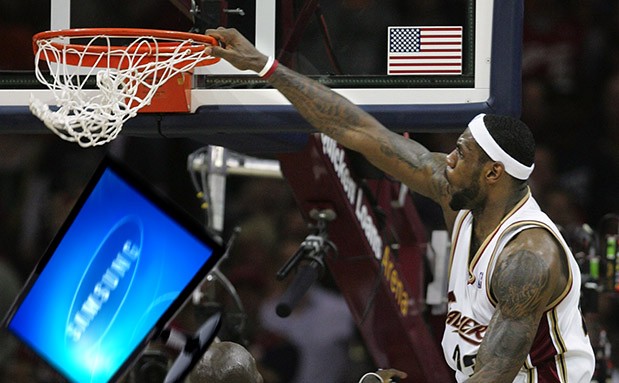Assault Weapons Ban Gains Momentum, View The Proposed List of Banned Weapons
Senator Diane Feinstein (D) California
WASHINGTON — Congress’ latest crack at a new assault weapons ban would ban 157 types of assault weapons, but would protect more than 2,200 specific firearms.
One model of that firearm, the Ruger .223 caliber Mini-14, is on the proposed list to be banned, while a different model of the same gun is on a list of exempted firearms in legislation the Senate is considering. The gun that would be protected from the ban has fixed physical features and can’t be folded to be more compact. Yet the two firearms are equally deadly.
President Barack Obama has called for restoring a ban on military-style assault weapons and limiting the size of ammunition magazines.
A bill introduced last month by Sen. Dianne Feinstein, D-Calif. would ban specific firearms designed for military and law enforcement use and exempt others made for hunting purposes. It also would ban ammunition magazines that hold more than 10 rounds.
Yet there are firearms that would be protected under Feinstein’s proposal that can take large capacity magazines like the ones used in mass shootings that enable a gunman to fire dozens of rounds of ammunition without reloading.
Feinstein said in a written response to questions from The Associated Press that the list of more than 2,200 exempted firearms was designed to “make crystal clear” that the bill would not affect hunting and sporting weapons.
The December shooting at an elementary school in Newtown, Conn., that left 26 students and educators dead forced Washington to focus on curbing gun violence, a risky political move not tried in decades.
The gun industry, which is fighting any sort of ban, says gun ownership in the U.S. is the highest it’s ever been, with more than 100 million firearms owners.
Obama and Vice President Joseph Biden have traveled around the country in an effort to gain support for new laws. Feinstein’s proposal is the only sweeping piece of legislation designed to ban assault weapons currently being considered.
But some gun experts say the lists of banned and exempted firearms show a lack of understanding and expertise of guns.
“There’s no logic to it,” said Greg Danas, president of a Massachusetts-based expert witness business and firearms ballistic laboratory. “What kind of effect is it going to have?”
Feinstein’s bill defines an assault weapon as a semi-automatic firearm with a detachable magazine that has one of several military characteristics that are specified in her legislation. Examples of those characteristics include a pistol grip, which makes a firearm easier to hold, and a forward grip, which makes the firearm easier to stabilize to improve accuracy. The definition is similar to the one in Congress’ original ban on assault weapons, which went into effect in 1994 and was widely criticized for outlawing firearms based on cosmetic features.
Feinstein was behind the 1994 law which, at the time, protected more than 600 firearms. The current bill would exempt by name and model more than 2,200 firearms by name and model.
Feinstein said her staff had worked for more than a year to draft updates for the ban that expired in 2004, and it was apparent in the wake of recent mass shootings that now was the time to introduce a new bill. She said her staff consulted with law enforcement agencies and policy experts for months to create the expanded list.
Naming firearms that would remain legal under an assault weapons ban is a politically motivated gesture that was used to help pass the original ban in the early 1990s, people familiar with the process said.
Any firearm that does not fall within the law’s definition of an assault weapon would not be banned. As a result, the list gives vulnerable politicians cover from constituents who do not want to give up their firearms.
For example, a politician can look at the list and assure a constituent that the government would not ban the firearm he or she loves to use for deer hunting. Under the 1994 law and the currently proposed one, the government would not have the authority to take away guns people already legally own. The ban would only apply to specific firearms manufactured and sold after the law is enacted.
A list of exempted firearms was not part of Feinstein’s original assault weapons ban two decades ago, said Michael Lenett, one of the lead congressional staffers on gun control issues in 1994. A separate bill in circulation exempted far fewer hunting and sporting firearms, Lenett said.
The purpose of creating such a list was to assure people that the government was not going after any legitimate hunting or sporting weapons. “The other purpose of the list was to have a high profile way of assuring certain folks — including legislators — that we would not be going after their weapons that they use for those legitimate purposes,” Lenett said.
“It was a win-win situation,” Lenett recalled, because, he said, if the list could help pick up votes needed to pass the bill and temper some of the opposition, it could assuage some opponents of the ban without making the law less effective.
But gun experts say the lists in 1994 and the expanded lists of today don’t make much sense.
“The bill demonstrates a shocking ignorance of the product they are purporting to regulate,” said Lawrence Keane, senior vice president of the National Shooting Sports Foundation, a trade association based in Newtown, Conn., that represents gun manufacturers. “I have no idea how they arrived at this list. It would seem to be random, bordering on throwing darts at a dart board.”
For instance, Feinstein’s current proposal includes exemptions for three specific types of the M-1 Carbine, an assault rifle designed for the military that the U.S. currently bans from being imported. A draft of the legislation, created and modified in November and early December last year, banned the M-1 Carbine and didn’t exempt any models, according to a copy obtained by the AP.
Feinstein said there was disagreement among firearms experts, law enforcement and gun safety organizations about whether to include the M-1 Carbine on the list of banned weapons.
“It has been used in multiple police shootings, and was originally used by U.S. soldiers on the battlefield,” Feinstein said. “On the other hand, it comes in models that would not meet the military characteristics test.” She said she decided to limit banned weapons to those that met the definition outlined in the bill.
At a Jan. 30 hearing by the Senate Judiciary Committee on gun violence, National Rifle Association President Wayne LaPierre said Feinstein’s bill is “based on falsehoods to people that do not understand firearms, to convince them that the performance characteristics of guns that they are trying to ban through that bill are different than the performance characteristics that they’re not trying to ban.”
The Ruger Mini-14 is a perfect example.
The model that has a fixed stock would be exempted by Feinstein’s ban; the weapon was protected in the 1994 law as well. A Ruger Mini-14 with a collapsible and folding stock would be illegal.
The guns fire the same caliber bullet and can take detachable magazines that could hold dozens of rounds of ammunition. The folding stock only reduces the gun’s length by 2.75 inches, according to the manufacturer’s website.
“It’s irrelevant,” Edmund Mireles, an FBI agent who survived the Miami shootout, said of the differences in features. “They’re equally dangerous.”
Mark D. Jones, a senior law enforcement adviser for the University of Chicago Crime Lab, said the folding stock does not affect the firearm’s lethal potential.
“Given that both firearms will accept a 30 round or larger magazine, it renders the differences between them entirely cosmetic,” Jones said.
Kristen Rand, the legislative director at the Washington-based Violence Policy Center, said the Ruger Mini-14 model that would be banned under Feinstein’s legislation is easier to hold while firing because it has a pistol grip, and it’s easier to hide because it has a collapsible stock. That’s what makes it more dangerous that the Ruger Mini-14 with the fixed stock which would be exempted under the Feinstein bill, she said.
“And that’s supposed to save somebody’s life?” asked Hanlon, the FBI agent shot alongside Mireles.
Hanlon considered the differences between the two models and whether the events of April 11, 1986, would have been different if the shooter used a Ruger Mini-14 with a fixed stock. “I don’t think it would have changed a damn thing,” he said. “I don’t see what makes that gun less dangerous.”
Assault Weapons on the HitList Include
2013 Gun Ban List
List of Firearms Prohibited by Name
Rifles:
All AK types, including the following: AK, AK47, AK47S, AK–74, AKM, AKS, ARM, MAK90, MISR, NHM90, NHM91, Rock River Arms LAR–47, SA85, SA93, Vector Arms AK–47, VEPR, WASR–10, and WUM, IZHMASH Saiga AK, MAADI AK47 and ARM, Norinco 56S, 56S2, 84S, and 86S, Poly Technologies AK47 and AKS; All AR types, including the following: AR–10, AR–15, Armalite M15 22LR Carbine, Armalite M15–T, Barrett REC7, Beretta AR–70, Bushmaster ACR, Bushmaster Carbon 15, Bushmaster MOE series, Bushmaster XM15, Colt Match Target Rifles, DoubleStar AR rifles, DPMS Tactical Rifles, Heckler & Koch MR556, Olympic Arms, Remington R–15 rifles, Rock River Arms LAR–15, Sig Sauer SIG516 rifles, Smith & Wesson M&P15 Rifles, Stag Arms AR rifles, Sturm, Ruger & Co. SR556 rifles; Barrett M107A1; Barrett M82A1; Beretta CX4 Storm; Calico Liberty Series; CETME Sporter; Daewoo K–1, K–2, Max 1, Max 2, AR 100, and AR 110C; Fabrique Nationale/FN Herstal FAL, LAR, 22 FNC, 308 Match, L1A1 Sporter, PS90, SCAR, and FS2000; Feather Industries AT–9; Galil Model AR and Model ARM; Hi-Point Carbine; HK–91, HK–93, HK–94, HK–PSG–1 and HK USC; Kel-Tec Sub–2000, SU–16, and RFB; SIG AMT, SIG PE–57, Sig Sauer SG 550, and Sig Sauer SG 551; Springfield Armory SAR–48; Steyr AUG; Sturm, Ruger Mini-14 Tactical Rife M–14/20CF; All Thompson rifles, including the following: Thompson M1SB, Thompson T1100D, Thompson T150D, Thompson T1B, Thompson T1B100D, Thompson T1B50D, Thompson T1BSB, Thompson T1–C, Thompson T1D, Thompson T1SB, Thompson T5, Thompson T5100D, Thompson TM1, Thompson TM1C; UMAREX UZI Rifle; UZI Mini Carbine, UZI Model A Carbine, and UZI Model B Carbine; Valmet M62S, M71S, and M78; Vector Arms UZI Type; Weaver Arms Nighthawk; Wilkinson Arms Linda Carbine.
Pistols:
Centurion 39 AK pistol, Draco AK–47 pistol, HCR AK–47 pistol, IO Inc. Hellpup AK–47 pistol, Krinkov pistol, Mini Draco AK–47 pistol, Yugo Krebs Krink pistol; All AR–15 types, including the following: American Spirit AR–15 pistol, Bushmaster Carbon 15 pistol, DoubleStar Corporation AR pistol, DPMS AR–15 pistol, Olympic Arms AR–15 pistol, Rock River Arms LAR 15 pistol; Calico Liberty pistols; DSA SA58 PKP FAL pistol; Encom MP–9 and MP–45; Heckler & Koch model SP-89 pistol; Intratec AB–10, TEC–22 Scorpion, TEC–9, and TEC–DC9; Kel-Tec PLR 16 pistol; The following MAC types: MAC–10, MAC–11; Masterpiece Arms MPA A930 Mini Pistol, MPA460 Pistol, MPA Tactical Pistol, and MPA Mini Tactical Pistol; Military Armament Corp. Ingram M–11, Velocity Arms VMAC; Sig Sauer P556 pistol; Sites Spectre; All Thompson types, including the following: Thompson TA510D, Thompson TA5; All UZI types, including: Micro-UZI.
Shotguns:
Franchi LAW–12 and SPAS 12; All IZHMASH Saiga 12 types, including the following: IZHMASH Saiga 12, IZHMASH Saiga 12S, IZHMASH Saiga 12S EXP–01, IZHMASH Saiga 12K, IZHMASH Saiga 12K–030, IZHMASH Saiga 12K–040 Taktika; Streetsweeper; Striker 12.






































































